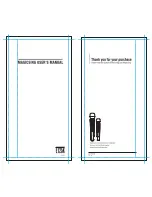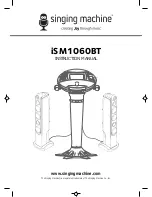
16
GB
• Plasma cutting types
Drag cutting
Hold the tip of the pistol low over the
workpiece and press the pistol switch.
Now move the pistol tip until there is contact
with the workpiece and the cutting arch
is fixed in position. Once the cutting arch
has been generated, move the pistol in the
desired direction. Makes sure that the pistol
tip is slightly angled and that contact with
the workpiece is maintained. This working
method is called drag cutting. Avoid quick
movements. Sparks falling off the top of the
workpiece is an indication of moving too
quickly. Move the pistol at a speed in which
the spark accumulation is concentrated on
the bottom side of the workpiece. Ensure
the material is completely separated prior to
continuing with this process. Set the neces-
sary drag speed.
Distance cutting
In some cases, it is beneficial to cut while
holding the tip of the pistol at a height
of 1.5 mm to 3 mm above the workpiece.
This reduces the quantity of material that
is blown back into the tip. This makes it
possible to penetrate thicker material
strengths. Distance cutting should be used
if penetration or furrow work is carried out.
Furthermore, the ‘distance’ working tech-
nique can be used when you need to cut
sheet metal to minimise the risk of material
splashing back which could damage the tip.
Perforation
To drill through, place the tip approx.
3.2 mm above the workpiece. Hold the
pistol at a slight angle to guide the sparks
away from the pistol tip and your body.
Press the plasma burner button
8a
and lower
the tip of the pistol until there is a main
cutting arch and sparks begin to form. Test
the perforation on a test object that is no
longer needed and once there are no
problems start drilling through at the
previously defined cutting line on your
workpiece. Check the pistol for wear and
tear, cracks or exposed cable pieces.
Replace or repair them prior to using the
device. A badly worn pistol tip/nozzle
contributes to the reduction of speed, voltage
and unclean separation. An indication of a
badly worn pistol tip/nozzle is an extended
or oversized nozzle opening. The external
electrode must not be recessed by more
than 3.2 mm. Replace it if the wear is
greater than the specified dimensions.
If the protective cap is difficult to tighten,
check the thread.
Using the device
Summary of Contents for PPS 40 A1
Page 3: ...1 2 2 14 9 11 4 7 12 5 8 8a 3 5 6 7 8 4 6 10 13 8b 8c A B C D ...
Page 4: ...8c 8c 22 8e 8d 8d 8b 8 8a 8b 8c E F G 16 15 21 21 21 21 17 16 18 2 20 19 H J K L I ...
Page 23: ...23 GB ...
Page 24: ...24 GB ...
Page 44: ...44 HU Jegyzetek ...
Page 64: ...64 SI Zapiski ...
Page 83: ...83 CZ ...
Page 84: ...84 CZ ...
Page 103: ...103 SK ...
Page 104: ...104 SK ...
















































